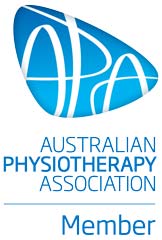Dry Needling
What is dry needling?
Trigger point dry needling is an invasive procedure using a solid filament needle to penetrate the skin in order to reach a myofascial trigger point within a muscle.
Dry needling is not acupuncture. It utilizes the anatomical landmarks of the body to locate and treat trigger points relieving a person’s pain and improve overall function. Dry needling is within the scope of physiotherapy. Physiotherapist who utilizes dry needling as part of their treatment have received extensive training for the appropriate technique and the use of dry needling in conjunction with other manual therapy techniques.
Benefits:
- Decreased pain both locally and into referral sites
- Improved muscle function
- Improve ability to move and function for daily activities
- Decrease muscular tension and improve myofascial flexibility
Risks:
Mild or moderate Adverse Events: bruising (7.55%), bleeding (4.65%), pain during treatment (3.01%), and pain after treatment (2.19%).
Serious Adverse Events: pneumothorax, Cardiac Tamponade & damage to organs (0.04%)
Uncommon Adverse Events: aggravation of symptoms (0.88%), drowsiness (0.26%), headache (0.14%), and nausea (0.13%).
Rare Adverse Events: fatigue (0.04%), altered emotions (0.04%), shaking, itching, claustrophobia, and numbness, all 0.01%.
Reference: Brady, S et al. Journal of Manual and Manipulative Therapy 2013 VOL. 000 NO. 000 (2013)
Precautions:
- Clotting dysfunction
- Severe cardiac conditions and recent cardiac surgery
- Previous adverse reaction to acupuncture or dry needling therapy
- Recent joint replacement
What is dry needling used to treat?
Dry needling is used to treat a wide variety of musculoskeletal issues including but not limited to:
- Stiff neck
- Shoulder pain
- Back pain
- Muscle tightness/spasm
- Osteoarthritis
- Stress fracture
Call us today on 07 3216 9677 to find out how Sunnybank Central Physiotherapy could help you.






